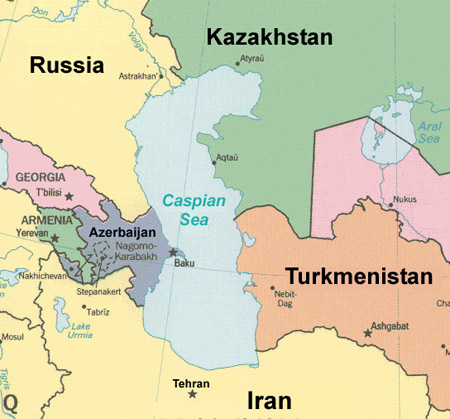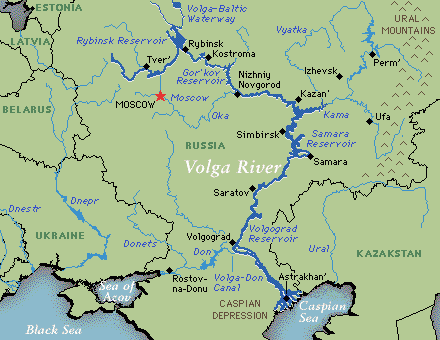Caspian Sea Agreement Paves the Way for Belt and Road Integration

Russia, Iran, Azerbaijan, Kazakhstan, and Turkmenistan – all of whom border the Caspian Sea – have agreed in principle on how to divide it up. Their respective leaders signed the Convention on the Legal Status of the Caspian Sea in the Kazakh Port of Aqtau on Sunday.

It establishes a formula for dividing up its resources and prevents other powers from setting up a military presence there. However, the agreement does not fully deal with the main outstanding issue of territorial rights over the seabed. However, the delimitation of the seabed – which has caused most disputes – will require additional agreements between littoral nations, Iranian President Hassan Rouhani said. For almost 30 years Russia, Iran, Kazakhstan, Turkmenistan, and Azerbaijan – have argued over how to divide the world’s biggest enclosed body of water. While some, most notably Kazakhstan, have pressed ahead with large offshore projects such as the Kashagan oil field, disagreement over the sea’s legal status has prevented other projects from being implemented. One of those is a pipeline across the Caspian which could ship natural gas from Turkmenistan to Azerbaijan and then further to Europe, allowing it to compete with Russia in the Western markets. Moscow understandably is cool on the concept.
Russian President Vladimir Putin stated the obvious: “Our summit is exceptional if not truly epoch making.” Rouhani was more circumspect: “Today we have taken a very important step but we should recognise there are more important issues that need to be addressed.” This was a hard-won diplomatic agreement. As late as last week Iranian analysts reported that Tehran was “50:50” on whether to sign. The main sticking point was how to apportion the seabed. The four other countries favour Caspian division by a line equidistant from the five coastlines, but Iran – with the smallest coastline – does not. The solution, it seems, has been to keep the wording vague and delay divisive decisions. On Sunday, the five nations agreed to 15 miles of sovereign waters, in addition to a further 10 nautical miles of fishing area, beyond which there would be common waters.
Although the wording on the document is vague, it does still represent a positive move in terms of Caspian development. Russia naturally wishes to exert a significant amount of influence, while at the same time recognizing that its partners in the Caspian also need development assistance. Turkmenistan remains relatively excluded from global trade and is reliant on oil and gas exports, which suits Russia as that is a commodity they have plenty of. It means that Russia can inflict pressure on Ashgabat to bend to its will. The two elephants in the room however are China and Turkey, both of whom have vested interests in traversing the Caspian. I wrote about these issues in the article Turkey’s Pivotal Role in China’s Belt and Road Initiative.
Of note, however, is the fact that the Caspian Agreement provides an initial platform for further dialogue. Of additional note is the mutual desire to expand trade ties, including specific agreements on trade and economic cooperation and an agreement on cooperation in transportation. Russian President Vladimir Putin said in his address, “Transport interconnection is one of the key factors for securing sustainable growth and strengthening our countries’ cooperation,” explaining that Russia is implementing a strategy for the development of seaports in the Caspian Basin till 2030, including the building of a deep-water port near Kaspiysk by 2025. The port will be capable of handling heavy-duty vessels with a payload of 15,000-25,000 tons.
This is significant as Kaspiysk is the Russian port directly across the sea from Kazakhstan’s Kuryk Port. Its development as a deep-sea port implies the development of an east-west corridor in the context of the Belt and Road Initiative. Developing a port for ships of 15,000 to 25,000 tons is also significant since the largest ships currently are no more than 10,000 tons and conform to the river-sea class capable of entering the Volga River and the broader Russian river and canal network. Upgrading these suggest a new generation of shipping will be deployed on the Caspian, with Kuyrk being used a a processing and reloading facility to allow smaller vessels to enter the Russian river networks. This will also go hand in hand with better connectivity and trade passages being developed allowing access to Russia’s interior market and the main consumer markets in cities such as Rostov, Volgograd, Samara, Simbirsk, Kazan, and Nizny Novgorod, each consumer markets of over one million in their own right.

Further, Caspian development issues can be expected to be played out at the Shanghai Co-Operation Organisation –Russia and Kazakhstan are full members, Iran shortly to be, while Azerbaijan is a dialogue partner and Turkmenistan a permanent guest. However, for development issues, the Caspian and the regional trade impact is going to be an area for investors to keep an eye on.
About Us
Silk Road Briefing is produced by Dezan Shira & Associates. The firm provides professional services to foreign investors and Governments on matters of Eurasian and Asian trade and investment, maintaining 28 offices throughout the region, including Beijing and Moscow. The practice maintains a China Belt & Road Advisory Desk. Please email silkroad@dezshira.com or visit us at www.dezshira.com
 Related Reading:
Related Reading:
![]() Baku, the City to Watch as China’s Belt and Road Divides the Caucasus
Baku, the City to Watch as China’s Belt and Road Divides the Caucasus
![]() Aqtau Port, Kazakhstan’s Caspian Sea Belt and Road Window to Europe
Aqtau Port, Kazakhstan’s Caspian Sea Belt and Road Window to Europe
![]() Turkmenbashi’s Caspian Window and the Turkmenistan Belt and Road
Turkmenbashi’s Caspian Window and the Turkmenistan Belt and Road





